Outsourcing Types and Strategies for Business Success
What Is Outsourcing and Why It Matters for Your Business
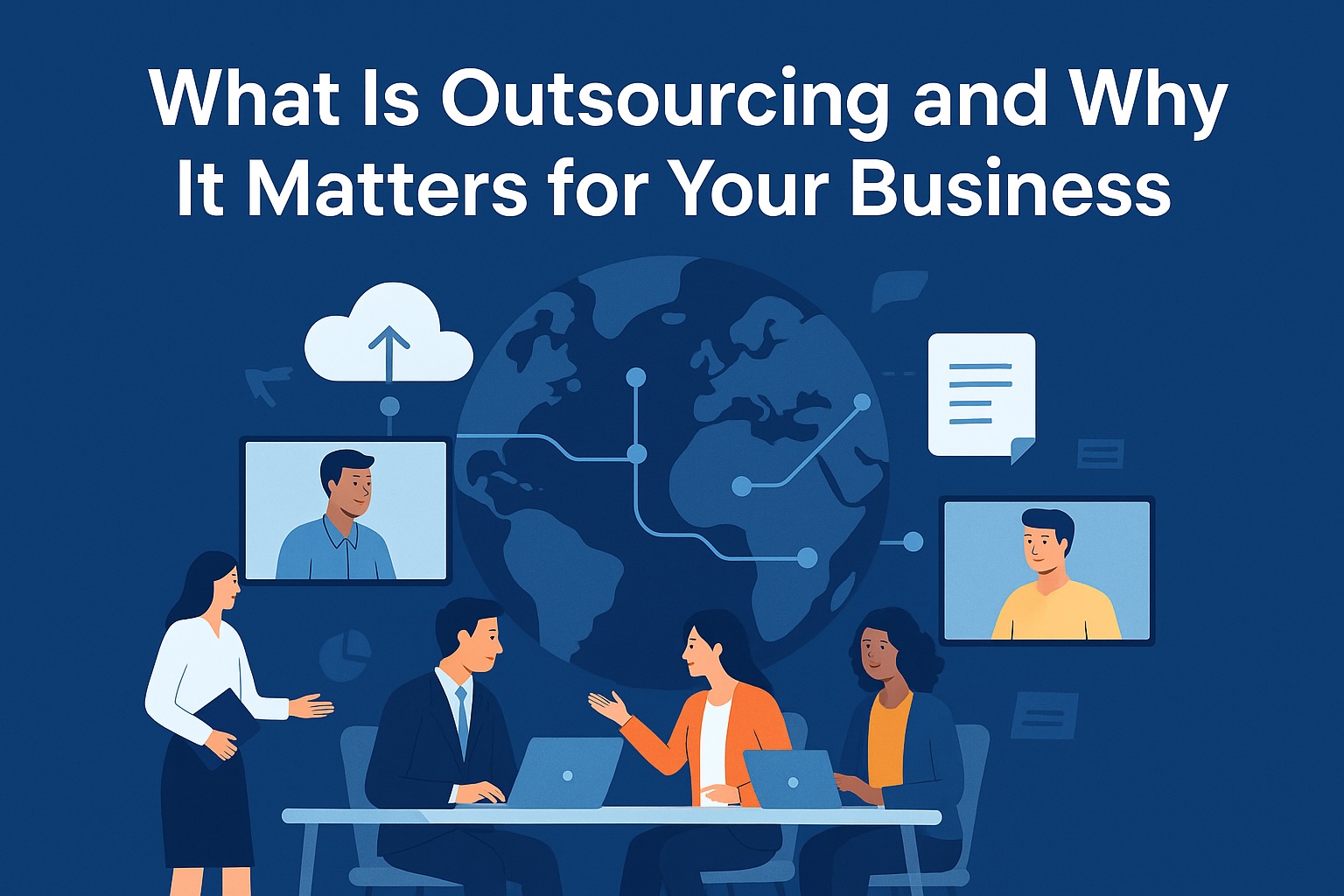
Outsourcing is the practice of contracting out business functions or processes to third-party providers instead of handling them in-house. In recent years it has become an accelerating trend, reaching “hyper-speed” during the COVID-19 pandemic as companies embraced global talent and remote work (prialto.com).
The global outsourcing market was worth over $300 billion in 2024 and is expected to grow to $525 billion by 2030, underscoring its growing importance for businesses worldwide. By outsourcing, companies can tap into specialized expertise, achieve cost efficiencies, and stay agile in a competitive environment (hirehoratio.com).
Why does outsourcing matter? For many organizations, outsourcing is a strategic tool to cut costs and improve efficiency by leveraging affordable expertise. Instead of building every capability internally, you can partner with experts to handle certain tasks or services. This allows your team to focus on core business activities that drive growth while offloading support functions.
In fact, 66% of U.S. companies outsource at least one department’s tasks to external providers (prialto.com), reflecting how common and vital outsourcing has become in modern business.
Key benefits of outsourcing:
1. Improved Focus on Core Activities
By outsourcing non-core or back-office tasks — such as administrative support, payroll, or customer service — companies allow internal teams to concentrate on what matters most: business strategy, product development, innovation, and customer engagement. This clearer focus on core competencies often results in stronger organizational performance and better competitive positioning.
2. Increased Efficiency and Access to Expertise
Outsourcing partners bring specialized skills, established workflows, and proven tools that increase overall operational efficiency. Whether you're outsourcing IT services, call center operations, or accounting functions, you're gaining access to professionals who have deep expertise in those areas. This often leads to faster turnaround times and higher-quality service delivery compared to building capabilities from scratch.
3. Controlled Costs and Operational Savings
Cost reduction is one of the primary drivers behind outsourcing. It helps businesses convert fixed costs (like salaries, office space, and infrastructure) into variable costs — meaning you only pay for services as needed. Studies show that companies can save up to 60% by outsourcing non-core functions like IT, HR, or customer service.
4. Access to Broader Capabilities and Global Talent
Through outsourcing, businesses gain access to specialized tools, platforms, and professionals they might not otherwise afford or attract. For example, a small business can tap into global IT expertise or advanced analytics services without investing in internal training or infrastructure. This extended reach enhances both capability and innovation potential.
5. Greater Flexibility and Competitive Advantage
Outsourcing allows companies to scale operations quickly based on market demand. Whether it's expanding customer support during peak seasons or accelerating software development to meet a product launch deadline, outsourcing partners offer the agility needed to respond without the delays of internal hiring. This responsiveness helps businesses stay competitive and adaptive. . It helps companies improve efficiency, reduce costs, and focus on their core strengths.
From startups to enterprises, outsourcing allows businesses to scale operations, tap into global talent, and stay competitive.
While outsourcing offers many benefits, it’s important to approach it strategically. Choosing the right outsourcing model and partner helps ensure you gain the cost savings and efficiency improvements without compromising quality or control. In the sections below, we’ll explore the main types of outsourcing – both by location and by business function – and how to choose the best strategy for your needs.
Types of Outsourcing Based on Location
The location of your outsourcing partner impacts costs, collaboration, and compliance. Three main models include:
Onshore Outsourcing
Onshore outsourcing refers to hiring a service provider located within the same country as your business. This model provides advantages in language, legal regulations, business practices, and time zone alignment. It's ideal for functions requiring close coordination, strict compliance, or sensitive data handling.
Pros:
-
No language or cultural gaps
-
Easier legal and data compliance
-
Real-time communication and collaboration
Cons:
-
Higher labor costs
-
Smaller talent pool compared to offshore options
For example, a U.S.-based firm might outsource its accounting processes to an accounting service provider located in another U.S. city. Because they are onshore, the company can have real-time meetings, similar work hours, and fewer cultural hurdles. Onshore vendors often provide high-quality service and seamless communication – however, these benefits come at a higher price. Onshore outsourcing usually carries the highest costs since you’re paying local labor rates. Companies choose onshore when constant communication or strict data compliance is critical, and they are willing to pay a premium for proximity and quality. In summary, onshore outsourcing offers convenience and control while avoiding the challenges of distance, but budget considerations are key given the cost trade-off.
Offshore Outsourcing
Offshore outsourcing means contracting services to providers in distant countries, often with significantly lower labor costs. Common destinations include India, the Philippines, Vietnam, and Eastern Europe. This model is widely used for IT services, customer support, and software development.
Pros:
-
Major cost savings
-
Vast global talent pool
-
24/7 productivity potential due to time zone differences
Cons:
-
Time zone coordination challenges
-
Language and cultural barriers
-
IP and security concerns
Nearshore Outsourcing
Nearshore outsourcing involves hiring teams in nearby or regional countries that are geographically and culturally closer. For example, a Singapore company might nearshore to Vietnam or Malaysia. This strikes a balance between cost savings and operational convenience.
Pros:
-
Better time zone alignment
-
Moderate cost advantages
-
Fewer cultural and communication challenges
Cons:
-
Higher costs than offshore
-
Smaller workforce pool than global outsourcing
10 Major Types of Outsourcing Every Business Should Know

1. Business Process Outsourcing (BPO)
BPO involves delegating non-core but essential business functions to specialized third-party vendors. These include both front-office (e.g., customer service) and back-office services (e.g., payroll, HR, data entry). THIENTU BPO focuses heavily on delivering efficient and scalable BPO and offshore staffing services.
Typical BPO services:
-
Payroll and accounting
-
Data entry and document processing
-
Technical support
-
Order processing and billing
Pros:
-
Cost savings and efficiency
-
Access to trained professionals and latest tools
-
Process consistency and round-the-clock support
Cons:
-
Less process control
-
Confidentiality and data security risks
2. Information Technology Outsourcing (ITO)
ITO refers to the outsourcing of IT functions such as infrastructure management, helpdesk, software maintenance, and cybersecurity. This allows businesses to tap into top technical talent without needing a full in-house IT team.
Pros:
-
Access to top tech experts
-
Scalable support and modern tools
-
Reduced capital investment in IT infrastructure
Cons:
-
Potential vendor lock-in
-
System integration and security vulnerabilities
3. Software Development Outsourcing
This involves hiring external developers or software agencies to build, test, or maintain applications. It's especially beneficial for startups or companies lacking internal dev teams.
Pros:
-
Faster launch times
-
Access to global developer talent
-
Cost-effective scaling of dev resources
Cons:
-
IP protection and NDA enforcement
-
Communication and time zone coordination gaps
4. Knowledge Process Outsourcing (KPO)
KPO refers to outsourcing high-value, knowledge-intensive tasks that require specific expertise, such as data analytics, market research, and legal services.
Pros:
-
High-level domain expertise
-
Strategic insights from expert analysis
-
Can drive innovation and informed decision-making
Cons:
-
Higher cost than standard BPO
-
Sensitive data and intellectual property handling risks
5. Process-Specific Outsourcing
This model focuses on outsourcing one specific task or workflow, such as recruitment, billing, or content moderation, while keeping the rest in-house.
Pros:
-
Focused task improvement
-
Access to niche expertise
-
Quick implementation
Cons:
-
Must coordinate with internal systems
-
Risk of misalignment without process context
6. Professional Outsourcing
Professional outsourcing means hiring external experts for tasks requiring specialized knowledge, such as legal, accounting, or marketing services.
Pros:
-
Expert skills on demand
-
Project-based flexibility
-
Reduces internal hiring costs for niche needs
Cons:
-
Higher specialist rates
-
Reliance on external providers for critical input
7. Project Outsourcing
Here, entire projects — like a website redesign, system upgrade, or marketing campaign — are outsourced to external teams with clear deliverables and timelines.
Pros:
-
Turnkey execution
-
Reduces internal workload
-
Leverages external innovation
Cons:
-
Less control after project handoff
-
Results depend on vendor understanding
8. Manufacturing Outsourcing
Involves contracting external factories to handle part or full product manufacturing. It's popular in sectors like electronics, consumer goods, and apparel.
Pros:
-
Lower production costs
-
Scalable manufacturing output
-
Access to specialized production technology
Cons:
-
Quality control and consistency challenges
-
Supply chain and geopolitical risks
9. Multisource Outsourcing
Multisourcing uses several vendors to fulfill different tasks or parts of a single function. It spreads risk and helps tap into varied capabilities.
Pros:
-
Reduces dependency on a single provider
-
Specialized service access
-
Built-in redundancy for business continuity
Cons:
-
Complex coordination between vendors
-
Risk of inconsistent service standards
10. Operational Outsourcing
Operational outsourcing delegates full business operations like logistics, IT, or HR to an external provider. It’s ideal for expanding capabilities without building them from scratch.
Pros:
-
Scalable, expert-led operations
-
Reduced overhead
-
Faster go-to-market for new services
Cons:
-
Less day-to-day control
-
Requires detailed SLAs and strong governance
How to Choose the Right Type of Outsourcing

Selecting the best outsourcing model requires a strategic, well-informed approach. The right type depends on what your business is trying to achieve — whether it's reducing costs, gaining access to specific skills, improving flexibility, or meeting growth demands. This section dives deeper into the core factors that influence outsourcing decisions.
1. Business Goals and Scope Alignment: Clearly define what you hope to accomplish. Are you looking to improve efficiency, reduce time-to-market, or increase innovation? Identify core vs. non-core functions and determine which can be outsourced without affecting your business identity. Align outsourcing with long-term strategy, not just short-term needs.
2. Cost vs. Value Considerations: Look beyond surface-level price tags. Analyze total cost of ownership, including vendor management, integration, and potential rework. Consider how much value the partner adds — better quality, faster delivery, or access to technology — and compare that with internal cost projections.
3. Risk, Compliance, and Security: Evaluate data protection needs and compliance with industry regulations such as GDPR or HIPAA. Consider political stability, legal frameworks in the vendor’s country, and contractual protections for your intellectual property. Ensure the vendor meets your risk tolerance with strong security protocols and governance practices.
4. Vendor Expertise and Track Record: Choose providers with proven industry experience, strong references, and clear service-level agreements (SLAs). Examine case studies or pilot project results. Their ability to deliver reliably, at scale, and with consistent quality will determine the success of your outsourcing initiative.
5. Communication and Cultural Fit: Successful outsourcing requires seamless collaboration. Assess time zone differences, language fluency, work culture compatibility, and the tools vendors use to communicate (Slack, Teams, email response times). Nearshore or onshore options may be preferable for high-touch collaboration.
6. Talent Availability and Specialization: Does the provider offer access to specific skills or certifications you lack in-house? For IT, marketing, finance, or design functions, outsourcing offers instant access to a global talent pool. Make sure the provider can scale talent up or down as your needs evolve.
7. Infrastructure and Technology Readiness: Evaluate the technical capabilities of the vendor. Do they have the required systems, bandwidth, software licenses, and physical infrastructure? Especially important for IT, data services, or manufacturing, their tech readiness should align with your project needs.
8. Pilot Projects and Scaling: Before committing to full-scale outsourcing, many companies start with a pilot. This helps evaluate the vendor’s capabilities and responsiveness without major risk. A successful pilot can then be expanded into a long-term engagement.
Bonus Tip: Use a hybrid outsourcing model — combining offshore for cost savings and onshore for quality assurance — to balance benefits.
By thoroughly evaluating these criteria, businesses can mitigate risks, maximize ROI, and create a sustainable outsourcing strategy tailored to their unique needs.
Your outsourcing choice should align with goals, resources, and risk profile.
Key decision factors:
-
Cost vs. value: Focus on ROI, not just price
-
Business goals: Is this short-term support or long-term capability?
-
Risk/compliance: Consider data, legal, and IP safety
-
Vendor expertise: Proven skills and fit for your industry
-
Communication needs: Time zone and responsiveness
-
Talent access: Can they meet your specific technical or professional needs?
Tip: Start with a small pilot project before scaling.
Case Studies on Outsourcing Success
Slack – Nearshore Software Development Outsourcing
the popular team messaging and collaboration platform, outsourced much of its early software development to a team in Canada. This offshore arrangement enabled Slack to keep operational costs low while gaining access to skilled developers who helped shape the product rapidly. By leveraging offshore talent, Slack accelerated its time-to-market and scaled efficiently, ultimately achieving over 200,000 paying users and a valuation of $2.8 billion.
This case illustrates how offshoring can empower startups to move quickly, reduce development costs, and access world-class technical expertise without building a large internal team.
WhatsApp – Offshore Development Outsourcing WhatsApp, during its startup phase, kept its internal headcount lean and turned to developers in Eastern Europe for app development. This offshore outsourcing move enabled the company to build a robust messaging platform at a fraction of Silicon Valley costs. The affordable, skilled offshore team helped WhatsApp scale to millions of users globally, ultimately leading to its $19 billion acquisition by Facebook.
These case studies showcase how different outsourcing models—nearshore, offshore, and manufacturing—can drive success through speed, cost-efficiency, and access to specialized talent. Each company tailored outsourcing to its unique needs, demonstrating that with the right partner and model, outsourcing becomes a strategic advantage.
Frequently Asked Questions
What types of business functions are best suited for outsourcing?
Functions that are repetitive, process-driven, or require specialized expertise are ideal for outsourcing. These include IT support, customer service, payroll, data entry, and digital marketing.
How do I choose between offshore, onshore, and nearshore outsourcing?
It depends on your priorities:
-
Choose onshore if you need tight collaboration and legal/regulatory alignment.
-
Go offshore if cost savings and 24/7 support are top goals.
-
Opt for nearshore to balance communication ease and affordability.
What are the main risks of outsourcing, and how can I mitigate them?
Risks include data security, service quality, and time zone misalignment. You can mitigate these by:
-
Establishing clear service-level agreements (SLAs)
-
Vetting vendor reputation and certifications
-
Using secure communication and project management tools
Is outsourcing only for large corporations?
No. Startups and small businesses often benefit the most, as outsourcing provides access to expert support without high overhead.
How do I ensure the quality of outsourced work?
-
Conduct a small pilot project
-
Use detailed contracts and quality benchmarks
-
Set up regular check-ins and performance reviews
Final Thoughts
Outsourcing isn't just a cost-cutting move—it's a smart growth strategy that allows companies to innovate faster, scale flexibly, and remain competitive. From streamlining operations to accessing global talent, outsourcing helps businesses of all sizes improve efficiency and resilience.
Whether you're seeking to optimize back-office functions, expand technical capabilities, or build a high-performing remote team, the right outsourcing model can unlock transformative value.
Partner with THIENTU BPO for customized BPO and offshore staffing solutions that match your goals. With our experience and talent network, we help you operate smarter, leaner, and faster.
Ready to take the next step? Let's accelerate your growth—together.
Explore nearshore vs offshore outsourcing. Understand differences, benefits, and industry use cases — and learn how THIENTU BPO helps optimize global outsourcing strategies.
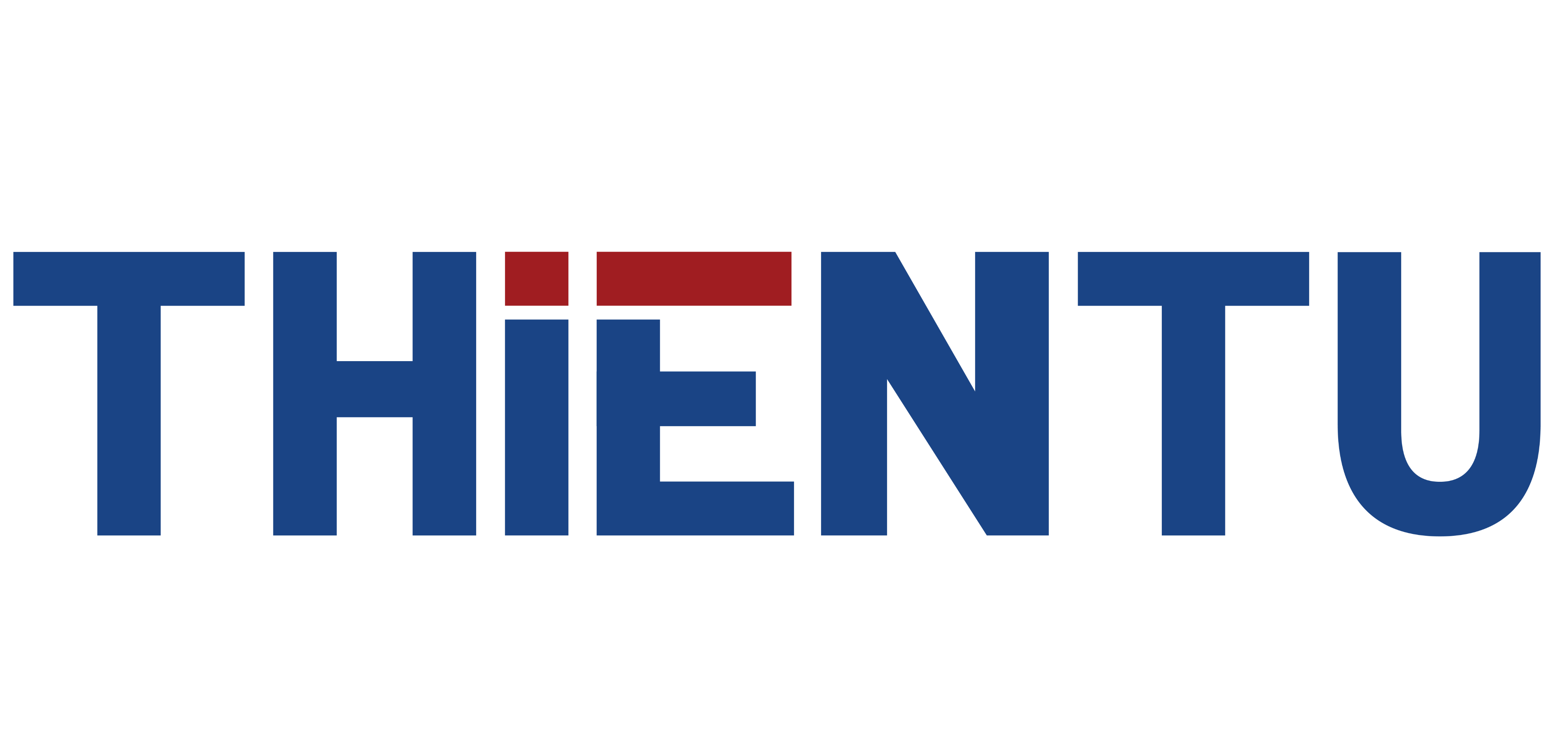

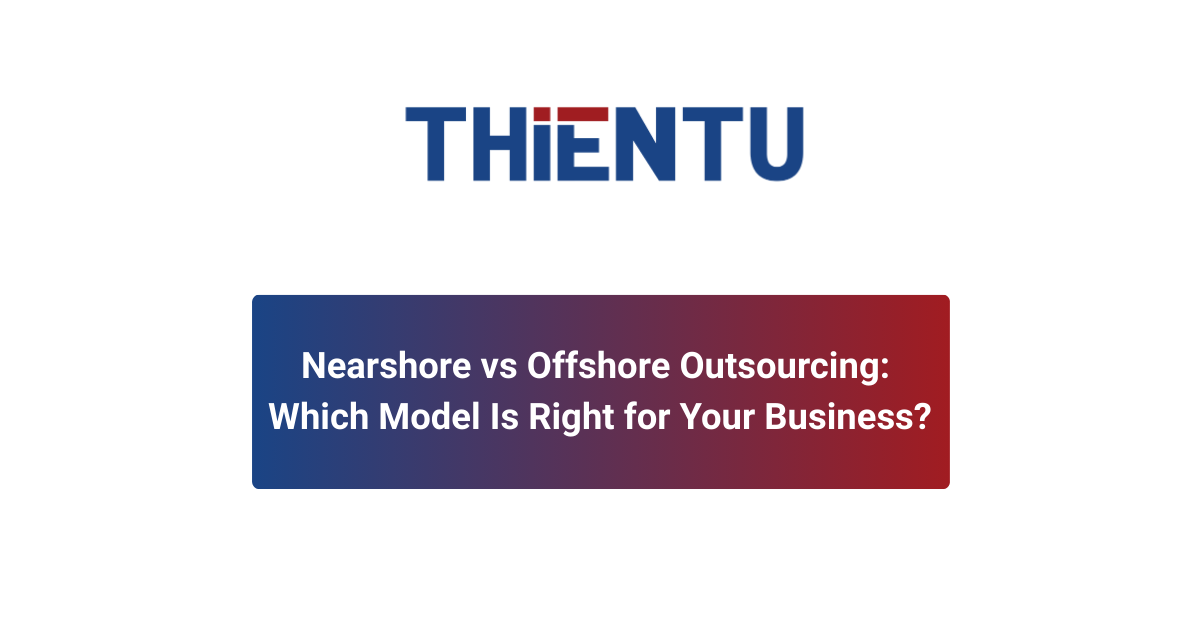

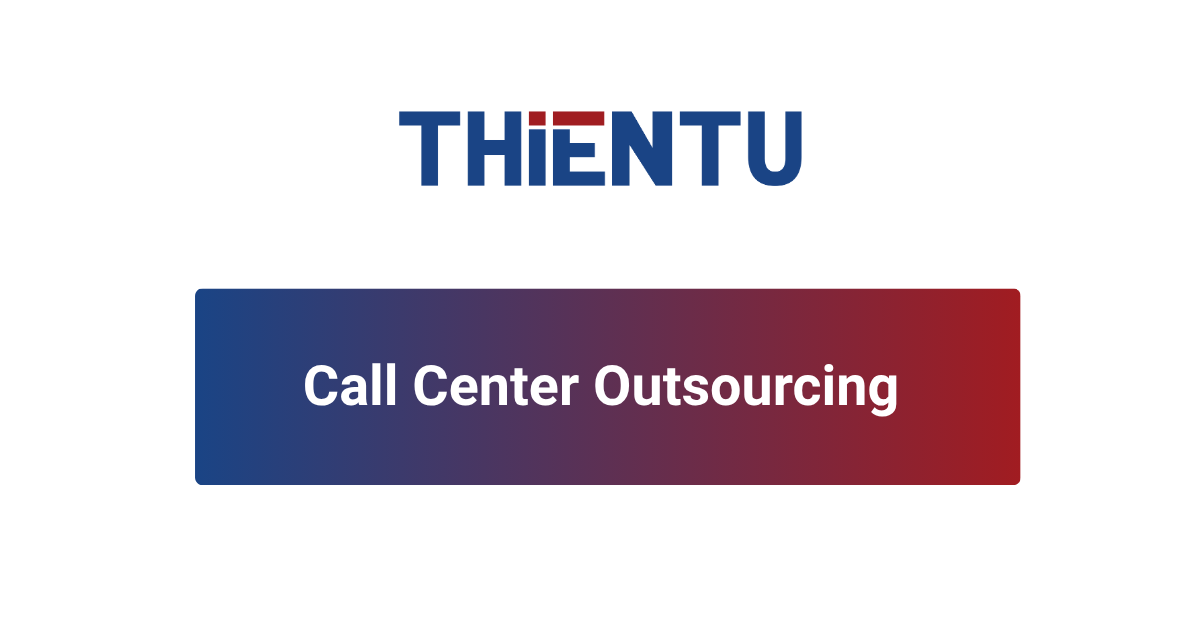






.png)
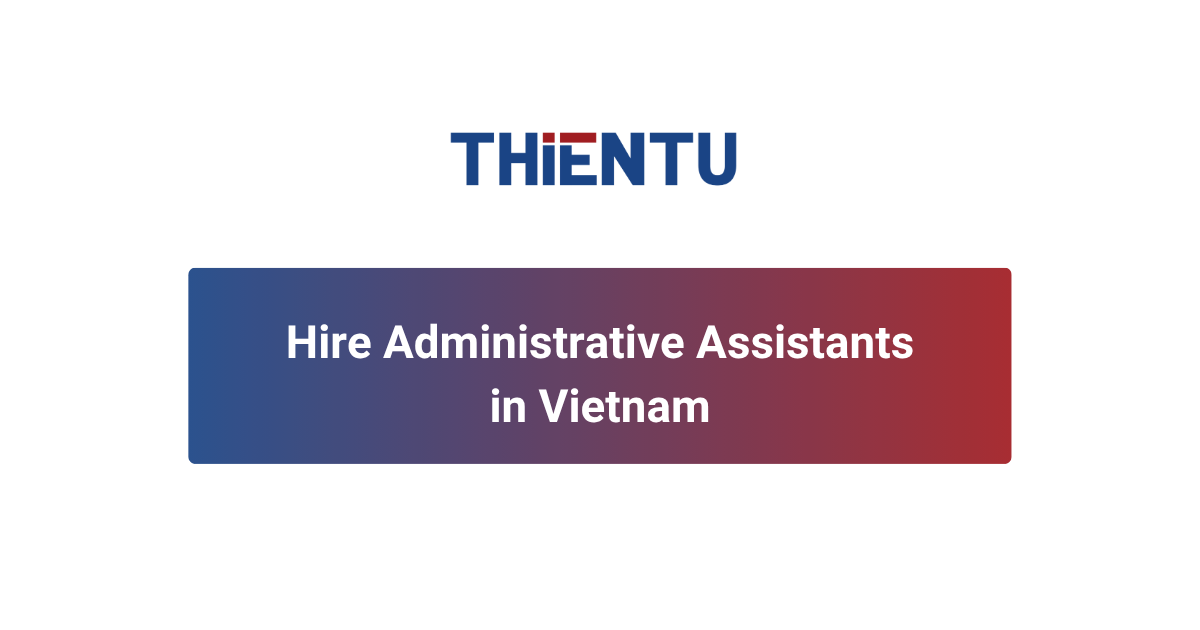







 Back
Back